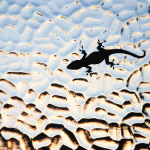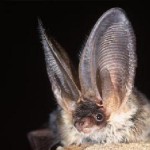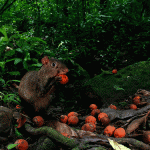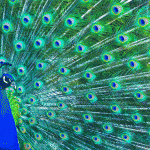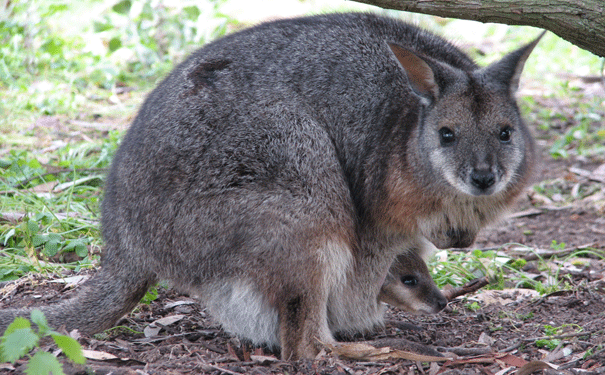
A tammar wallaby and her joey. The joey will remain in its mother's pouch for the first 200 days after its birth. Image: Shutterstock
Many imprinted genes regulate growth and nutrient provisioning for the developing fetus.
In marsupials, growth and development of the young occur postnatally, regulated by milk that changes in composition throughout lactation. Similar to the human placenta, which regulates embryonic growth and development, insulin (INS) appears to be imprinted in the marsupial mammary gland. This hormone is required for the lactation in mammals, which ultimately provides nutrients to the developing fetus. Australian researchers examined whether INS is imprinted in the mammary gland of the tammar wallaby (Macropus eugenii) and compared its expression with the insulin-like growth factor 2 (IGF2).
The current theory for the evolution of imprinting is focused on the ‘conflict hypothesis,’ which predicts that imprinting evolved due to a competition between the genes of the mother and father. This is based on the theory that the father’s genes caused the young to grow larger, while the mother’s genes restricted that growth so that she would survive to have another baby. However, unlike in the placenta, which contains both parental genomes, the mammary gland only contains the maternal genome.
“Our data provides evidence for an alternate hypothesis, the ‘co-adaptation hypothesis,’ and provides the first indication that imprinting is as important to regulate postnatal growth as it is for prenatal growth in the placenta,” says Jessica Stringer of Monash University, Queensland, who led the research.”We wished to explore the possible reasons for the evolution of genomic imprinting — the expression of a gene from only one of the two copies, dependent on the parental origin — a seemingly contrary method of gene expression because a single allele is normally disadvantageous in case mutations occur.”
According to Stringer, imprinting in mammals is restricted to eutherians (such as humans and mice) and marsupials (oppossums, wallabies). Unlike eutherians, marsupials have a very short pregnancy, so development mostly occurs during their long and sophisticated lactation. Since most imprinted genes have been found in the placenta in eutherians, no attention had been paid to the mammary gland which also supports growth and development of mammalian young. “Therefore, if the hypothesis is true, we predicted that marsupials may have more imprinted genes in the mammary gland than in the placenta.”
The researchers genotyped and screened a large number of wild animals for usable DNA sequence alterations (single nucleotide polymorphisms) to distinguish between the two copies of the INS and IGF2 genes. They then sequenced the expressed transcripts in the mammary glands and other tissues to see if one or both copies of each gene was expressed. If only one copy was expressed then it was presumed to be imprinted. This was confirmed in the pouch young liver as they were able to trace the parental inheritance of the expressed allele to the father, confirming maternal imprinting.
Interestingly, INS monoallelic expansion was strictly maintained in the mammary gland, suggesting that imprinting in the mammary gland may be more important for marsupials than in the placenta of marsupials, Stringer claims. “This is the first indication that INS is imprinted in a tissue outside of the placenta, and shows the necessity to look at individual tissues for gene expression rather than pooling embryonic tissues.”

